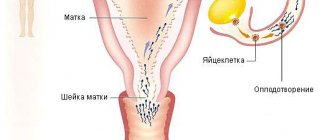For expectant mothers, a visit to the maternity hospital pleases and frightens at the same time. It seems that you are mentally prepared for the process of childbirth, but all these horror stories about inattentive doctors, beds in the hallway and rapid childbirth in the shower seem eerily realistic.
You know, if every pregnant woman was information savvy, there would be much less fear in her head.
The woman in labor would know that she has an unconditional right to qualified medical care, which is ensured at the legislative level. Let's talk about the rights of women in labor in the maternity hospital.
Rights of a woman in labor in a maternity hospital Ukraine
Source: GIPHY
Regulated by orders of the Ministry of Health of Ukraine No. 503 and No. 620. Medical reform in Ukraine is still far from complete, so there is no compulsory insurance for women in labor yet.
Choosing a maternity hospital and doctor
The right to choose a doctor and a maternity hospital is regulated by Article 34 of the health legislation. And yes, these are not just the whims of a pregnant woman: a lot depends on the psychological mood and mutual understanding with a specialist. The doctor is obliged to explain to you in an accessible form the reasons for prescribing certain procedures and medications, and warn you about possible risks and side effects.
You have the right to choose a maternity hospital, it is confirmed by Order No. 620 of the Ministry of Health. But there is an important nuance: if you have agreed with a certain doctor, and during childbirth there is a need for an operation, and the specialist does not know the equipment, the decision is made by the administration of the maternity hospital.
Natural childbirth - length of stay in the hospital
The length of hospital stay after a natural birth depends on the well-being of the woman and the newborn. Before discharge, the baby must have all the necessary vaccinations and blood and urine tests taken. An examination of the baby by specialized specialists is indicated - pediatrician, neurologist, neonatologist, ophthalmologist, cardiologist, otolaryngologist, etc.
Before the doctor discharges a woman from the maternity hospital, her body must also be thoroughly examined. After childbirth, the doctor regularly conducts examinations to identify symptoms of the development of the inflammatory process. A study is required to determine the degree of contraction of the uterine walls. Before discharge, the young mother is prescribed an ultrasound of the pelvic organs and an ECG. After receiving the results of laboratory and hardware tests, the doctor makes a decision to discharge the woman in labor from the maternity hospital or increase the length of stay in the hospital.
Upon receipt of satisfactory results of the studies, the woman and newborn are discharged home. As a rule, this occurs on the 3rd day after birth.
The length of hospital stay increases if a woman ruptures during childbirth or has had an episiotomy (an incision in the perineum). In this case, discharge is carried out on the 5th day after birth. In case of complications after episiotomy (suppuration, inflammation, poor healing), the period of stay in the maternity hospital increases to 7-10 days.
Rights of a woman giving birth in a maternity hospital in Kazakhstan
Source: GIPHY
The procedure for childbirth in medical institutions of the Republic of Kazakhstan is prescribed in order No. 498 “On approval of the rules for providing assistance” dated 07/07/2010. Since July 1, 2017, the Compulsory Health Insurance Fund has appeared in Kazakhstan. The head physician of polyclinic No. 4 in Almaty, Farida Agibaeva, spoke about the features of the system:
“As part of the compulsory medical insurance, assistance will be provided to all women giving birth in Kazakhstan, regardless of age, social status and income level. Unemployed pregnant women fall into groups of socially unprotected citizens; since January 1, 2018, the state pays contributions for them. Working women contribute 1% of their salary.
You can give birth in any clinic that has an agreement with the Federal Social Insurance Fund. If you choose a private clinic, you will have to pay for the services out of your own pocket.”
As in other states, a woman in labor has the right to reliable information, medical care, partner birth, respectful treatment, etc.
Reasons for continuing hospital stay after childbirth
As soon as the baby is born, many mothers dream of immediately showing it to all their friends and family. The desire to quickly “break out” of the walls of the hospital and find yourself in a cozy apartment also visits women in labor. But there is no need to rush to go home, and the important question of how many days they stay in the maternity hospital after childbirth is decided only by the doctor.
The length of hospital stay depends on several factors:
- How was the birth? Naturally or by caesarean section?
- If the mother gave birth by caesarean section, then the doctor must monitor the healing after the surgical suture. The degree of tissue regeneration at the suture also affects the length of stay in the hospital.
- During a natural birth, the doctor monitors the degree of healing of postpartum sutures in the vagina.
- How do women and babies feel after childbirth?
- Are all preventive vaccinations given to the newborn? Has laboratory and instrumental testing of the baby’s health been carried out?
If the condition of the newborn and the mother in labor is satisfactory, then the happy family can be discharged from the hospital within 3-5 days.
Rights of a woman in labor in the maternity hospital of the Republic of Belarus
Source: GIPHY
The provision of medical care to citizens of the Republic of Belarus is regulated by Article No. 14 of the Law “On Health Care” of June 18, 1993. A woman in labor has the right to register both at her place of actual registration and at her place of stay. This right is confirmed by Resolution No. 229 of December 22, 2008.
Women in labor have all of the above rights, but they are not always respected. In 2017-2019, the Radziny project conducted an online survey of 488 women in labor. They were asked several questions, including “Are you satisfied with the conditions in maternity hospitals? Are the reforms being implemented in reality?”
40% of respondents complained about the lack of a relationship culture. In many maternity hospitals, there is still a “Soviet” way of life, when the nurse does not hesitate to say, “What are you doing, are you going to kill the child?” Or something like that. 37% ask to respect the principles of informed consent. To have the choice to choose where, with whom, and how to give birth, they are asking to expand the list of medical services, including the introduction of birth certificates.
From the above we can draw a simple conclusion: the healthcare system needs to be reformed. Many women in labor, when entering the hospital, feel more like a supplicant than a client. And it’s worth knowing that in fact, a pregnant and giving birth woman has the right not only to suffer in silence and receive “some” medications.
And if you are information savvy, you will be able to protect yourself and your unborn baby. After all, the lives of two people depend on how well and timely the assistance is provided to you.
How to behave in the maternity hospital for a successful birth
In a series of publications dedicated to the maternity hospital, we have already written in detail about what you need to remember to take with you to the maternity hospital and how you can make your life easier there.
Receiving unit
When crossing it, especially at night, be prepared to be greeted by the doctor on duty, who will speak with poorly concealed irritation if you suddenly misunderstand him, give the wrong documents, or leave your bag on the walkway. Even if you are ready to curl up from contractions, the maternity hospital staff will not be moved to pity.
This is probably exactly what the notorious “emotional burnout syndrome” is, which sooner or later occurs in people of humane professions. There is no cure for the rudeness of medical workers, so immediately stop trying to appeal to their conscience and compassion, especially since very soon you will have someone whom you can educate legally and with greater expediency.
Therefore, I advise you to ask the doctor on duty: you should immediately change clothes and then you will fill out the birth history together, or vice versa. Do not agree to the compromise “give me an exchange card, a passport and go change clothes,” this is fraught with loss of documents and other unforeseen hassle.
Next, the woman in labor goes to the examination room. If you have an arranged birth and your doctor is already there, consider yourself lucky. In his presence, junior medical staff do not allow themselves verbal liberties.
In the examination room, lay out a pair of sterile gloves on the table, lay a napkin on the chair, undress and prepare for the fact that now it will be even more painful than it was. The doctor will check the dilatation of the cervix, this procedure is quite painful, but tolerable, there is no need to “slam” the hips, leaving the gynecologist’s hand “in a trap” - this is very annoying for them. Not everyone has the sense of humor to tell you that “walking with your aunt on your arm is uncomfortable for them,” most often you will hear the command: “Lie still!”
If during the examination the doctor says that the amniotic fluid is clear and the baby’s heart rhythm is clear, then you can breathe easy - you will not be sent for an emergency caesarean section.
By the way, enemas and shaving of the bikini area are now not required in maternity hospitals, but it is still better not to neglect these procedures - for the sake of your own comfort.
Prenatal ward
After you have been examined, you need to go up to the prenatal ward with all the luggage. This is where you will first appreciate partner childbirth, if, of course, you decide to do it. By the way, it is not necessary to call your husband as an assistant; in my opinion, an experienced girlfriend will be much more useful.
Once in the prenatal ward, spread the bed linen on the couch, put examination gloves, water and napkins, and a notepad and pen on the table. You will have to spend at least several hours in this room, so check the cleanliness of the “duck” in advance so that you don’t frantically look for a nurse and ask to disinfect the vessel. This is an important point in preventing infection in the maternity hospital. Place a rug on the floor near the bed that you can kneel on, this will make it easier to endure contractions.
After this, calmly undress; you should also remove your underwear, replacing it with a gauze pad. Let your hair down; it is believed that during contractions a woman should not be “held down” by anything. If contractions are weak and irregular, be sure to record their frequency; doctors will judge the intensity of labor based on the time.
By the way, in our maternity hospitals there is a bad practice - to “spur” labor by giving an injection of oxytocin, which stimulates contractions. Yes, sometimes doctors rush home too. But this is bad for a woman in labor; emergency childbirth is fraught not only with ruptures, but also with neurological problems in newborns. Therefore, agree to stimulation only if the contractions are really not getting stronger.
After you have settled down, the doctor will come again - and again he will look at the dilation and the color of the amniotic fluid. If the bladder has not burst, the obstetrician-gynecologist will pierce the membranes with a special instrument. For the faint of heart, it is better not to look at this execution device, which is a long pin with a hook at the end. During amniotomy, it is very important to lie quietly, no matter how painful it may be, so that the doctor does not damage the delicate skin of the baby’s head (this, alas, happens).
When the “front” waters recede, the baby’s head will press even more tightly to the cervix and begin to put pressure on it. This is where the fun begins...
Fight is a small life
Having gone through THIS more than once, I am absolutely sure that the success of childbirth depends 90% on the harmonious emotional state of a woman. Yes, it’s painful and difficult, but at that moment it’s even worse and worse for the child. Therefore, there is no need to aggravate the baby’s condition by panic.
You need to experience contractions in a trance state. You shouldn’t look at the clock and think about what the doctors said: “She’ll give birth in the morning.” Especially if it's still six in the evening. Let everything take its course.
When the contractions become strong and with short intervals for rest, it sometimes becomes scary at the thought that this will last for hours. The main rule is to breathe (you can read about breathing “in labor” here) and live through one specific contraction, then another and another... Try to rest during those 30 seconds during which the pain subsides. Surprisingly, this can be done if you don’t waste time on shouting and unnecessary throwing.
Pressure massage of the lower back partially compensates for the pain, but do not forget to apply the cream to the skin so as not to rub calluses. By the way, if during pregnancy you scoured half the Internet, reading a lot of literature about visualizing the birth process and other practices, then I’ll be sad, most likely you won’t remember any of them. And thank God! You shouldn’t turn on your brain at all at this moment; it’s important to listen to your body, focus on pain, it “tells” whether the process is going correctly.
At the end of the first stage of labor, the mother's vertical position allows the baby to smoothly pass through the dilated cervix. This allows you to protect the woman as much as possible from cervical ruptures. Therefore, do not be lazy, walk or, in extreme cases, sit, softly springing, on a fitball.
Now a very important point: it is important not to miss expelling contractions (pushing). Especially if you give birth without a partner. As a rule, maternity hospital staff hear “Oh, I’m giving birth!” a million times during a shift, so they do not rush to women writhing in pain. For some reason, they are confident that they know better who will give birth and when. Therefore, shout that you are trying and, sorry, you are about to crap yourself. This is a sure sign that the baby's head is about to be born. If you skip this period, then two complications may arise: numerous ruptures of the woman’s soft tissues or the cessation of contractions - then it is very difficult to give birth to a child, he has to be squeezed out.
March to the chair!
It’s amazing when an obstetrician-gynecologist commands: “Get on the chair, let’s give birth,” such inspiration and strength appear, even if before that you were crawling around the ward in a semi-fainting state. At that moment, sobriety of reason returns, and this is timely, because the most crucial moment is coming - the birth of the baby. At these moments, it is important to unquestioningly follow the doctor’s recommendations, so that later it will not be excruciatingly painful in the literal sense of the word. Doctors will tell you how to hold onto the chair correctly, when to push, and when to relax as much as possible and breathe like a dog to reduce the pressure of the uterus on the fetus.
The second period ends with the birth of first the baby’s head, then the shoulders, and then a victorious “squelch” is heard and the doctor lifts the baby. This is an unforgettable moment of boundless happiness. But doctors will forbid answering phone calls and saying that everything is fine, because the third period is ahead - the birth of the placenta. It is very important that the “baby spot” is completely separated from the wall of the uterus so that postpartum bleeding does not occur. And only when the doctor carefully examines this gray-brown-crimson something and says that everything is in order, you can close your eyes and breathe calmly - you did it, you brought a little man into life. Here he is, crawling around on your chest, like a little kitten, looking for your chest. Found. Myself. He sniffled and smacked his lips. Fell asleep. This is happiness.
Two hours to the room
If everything is in order, then you will be asked to do an unimaginable trick - move, without getting up, from the chair to the gurney and at the same time lie down so that a vessel is placed under the pelvis to collect blood. Ask that a rolled-up towel be placed under your lower back in front of him, otherwise the edge of the bowl will dig into your back, which will be very painful. Take heart, there is very little pain left - every 15 minutes the doctor will come and put pressure on the uterus, expelling blood from it. This is also excruciatingly painful, but the procedure is necessary to prevent fluid stagnation in the uterine cavity. While you are doing all this, your baby will be taken to be weighed and diagnosed on the Apgar scale, but after 10 minutes he will be returned back, placed on his chest. Traditional tags will be tied to the baby’s arms and legs with the date and time of birth of the baby, indicating his weight, height and gender.
Be prepared to lie on a gurney for the next two hours, possibly even in the hallway if your delivery room is busy. But if you think the inconvenience will bother you, relax! All you will think about at that moment is how to quickly examine your miracle and get a good night’s sleep.
In the next article we will talk about feeding, vaccinations and discharge from the hospital.
Set for the first bag
Be sure to familiarize yourself with the rules of the maternity hospital, since each institution has its own characteristics. Doctors can accept a patient who only has documents and a phone with her, and, for example, issue disposable clothes for her and the child. In such a situation, the luggage is transferred the next day after permission and only after the approval of doctors, who must make sure that everything is in order with the mother in labor.
Read also: When is the umbilical cord cut during childbirth? Why can't the umbilical cord be cut immediately?
The kit for the first bag that can be brought to the maternity hospital includes:
- Shampoo, toothbrush and toothpaste, towels and other personal hygiene products. However, it’s not scary if they suddenly aren’t there, because if the hospital itself doesn’t provide them, then at least they can be purchased at the hospital pharmacy.
- Panties, bandage, pads.
- Loose clothing that does not restrict movement, allowing easy access to the breast for feeding. For footwear, rubber slippers and other shoes that do not collect dirt are ideal. Seasonal items such as tights or warm sweaters may be required.
- Cutlery: spoon, fork, plate.
- Regular still water.
- Diapers if possible. To begin with, the least voluminous packaging with the smallest diaper size is suitable. After trying them out, you will be able to understand which size is right for your child.
- Wet wipes for children, which are necessary when changing diapers.
- 5 cotton and 5 flannelette diapers, as well as hats, socks and overalls depending on the time of year.
From what can be given to the maternity hospital, you can select a bag for dirty laundry, non-essential clothing, baby hygiene products (soap, cream, powder), and other items. They need to be put in a second bag. To avoid guessing whether the remedies will be useful or not, ask your doctor about it in advance.
What do you do 2 hours after birth?
After 2 hours, the neonatologist conducts a full examination of the newborn baby. He must discuss the results of the examination with his mother. Then, before being transferred to a shared ward, the child is weighed, the body length and head circumference are measured, a disposable clamp is applied to the remainder of the umbilical cord, tags are put on the arms with the mother's name and the date of birth (the same are given to the mother), the weight and gender of the child and dressed in home clothes (vest, rompers, hat, socks). For the same reason that it is so important that the baby is in skin-to-skin contact with his mother for 2 hours, the child must be dressed in home clothes. After all, it contains exactly those microorganisms with which the baby will live when he returns home. They are the guarantee of his health. Therefore, before going to the maternity hospital, new clothes bought in a store need to be washed and given the opportunity to lie in the house so that they become contaminated with home microflora.
What do you need for discharge?
It is absolutely not necessary to take all the necessary items with you at once. You can put together a separate package specifically for discharge, especially since its contents change depending on the weather, health status and other factors. The transfer of such baggage is necessary immediately before check-out.
As for the outfit for the baby, pay attention to the fact that the selected items do not contain substances that cause allergies. How to choose the right children's clothing:
- The items must contain exclusively hypoallergenic materials.
- The composition of the paint in which the item is painted must not contain toxic materials.
- The outfit itself should be loose, made from natural ingredients.
- Avoid a lot of buttons and ties on things. Whatever you put on your baby, it should be easy to take off and put on.
New clothes must be washed after you bring them home from the store.
During all the time that they lay on the store shelves, a lot of dust and dirt accumulated on them. In addition, it is unknown who packed them, and under what conditions the outfit was transported. Therefore, after purchasing, be sure to wash the outfits with baby soap, dry them and iron them. Such treatment will eliminate the possibility of any infection entering the fragile body.
Read also: What things are needed for a newborn baby in the maternity hospital - List
Depending on the time of year, your baby needs different types of clothing. Let's consider what you need to purchase separately for each season.
Winter
In winter, the child will need:
- Cotton and wool cap.
- Winter hat.
- Wool outer and changing overalls.
- Changing bodysuit.
- Diapers.
- Woolen pants.
- Cotton and flannelette diapers.
- A warm blanket.
Autumn and spring
Spring and autumn are famous for their unpredictable weather. In autumn it can still be very hot, while in spring it can get very cold and even snow. Therefore, make sure that your baby’s wardrobe contains the following things:
- Warm flannelette, knitted or cotton vest.
- Slip overalls.
- T-shirt.
- Flannelette thin and dense diaper.
- A thin cotton hat is required; choose other hats depending on the weather.
- Outerwear, such as overalls, an envelope or a baby bag.
- Socks.
- A blanket or envelope in which the child will go home.










